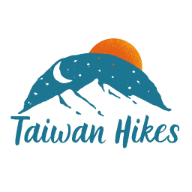Smangus Giant Tree Trail: A Serene Adventure in Taiwan's Sacred Forest
The Smangus Giant Tree Trail offers a peaceful hike through Taiwan's ancient forest. It features the majestic Yaya Qparung, a 2,500-year-old sacred tree. This easy trail is perfect for admiring the towering trees and stunning mountain views, making it an ideal nature escape.
For a whole experience, stay overnight in Smangus village, where you can immerse yourself in local Atayal culture. Yet, a one-day visit is also a great getaway to immerse yourself in the beautiful forest.
This post includes traffic control and accommodation suggestions. Remember to plan your trip around traffic controls, as vehicle access is limited to specific times, ensuring a seamless journey to this beautiful and peaceful destination.
Disclaimer:
All content is for inspiration only. Use Taiwan Hikes' suggestions at your own risk. We are not responsible for any losses, injuries, or damages.
Taiwan Hikes may include affiliate links. When you purchase through these links, you support our ability to continue providing FREE content — at no additional cost to you.
All content is for inspiration only. Use Taiwan Hikes' suggestions at your own risk. We are not responsible for any losses, injuries, or damages.
Taiwan Hikes may include affiliate links. When you purchase through these links, you support our ability to continue providing FREE content — at no additional cost to you.
Table of Contents:
Exploring Taiwan? Save Time with the Ultimate 2025 Hiking Guide! Discover the top hikes in every city and county across Taiwan—all accessible by public transport (bus links available). We've spent 50+ hours researching the best trails and transit options, so you can skip the hassle and start your adventure!
Trail Information: Smangus Giant Tree Trail 司馬庫斯巨木群步道
Trail Name:
Distance: 11 km (6.9 miles)
Route type: Out-and-back
Days/Hours Needed: 4-5 hours
Total Ascent/Descent: 582m/587m
Best Time to Go: All seasons.
Permits: Visitors don't need to apply for permits. However, visitors who drive must apply for a vehicle permit. During the cherry blossom season, the number of vehicles that can enter Smangus is capped daily from mid-February to mid-March.
Difficulty Level:
Distance: 11 km (6.9 miles)
Route type: Out-and-back
Days/Hours Needed: 4-5 hours
Total Ascent/Descent: 582m/587m
Best Time to Go: All seasons.
Permits: Visitors don't need to apply for permits. However, visitors who drive must apply for a vehicle permit. During the cherry blossom season, the number of vehicles that can enter Smangus is capped daily from mid-February to mid-March.
Difficulty Level:

Places to Reach
- Yaya Qparung 媽媽之樹, the No. 23, is 1,645 meters above sea level. Qparung mhway is her Atayal name. It is the most enormous giant tree on this trail, at 5.3 km and around 19.1 meters high.
Your support empowers Taiwan Hikes to create more FREE content, making your hiking adventures in Taiwan even more enjoyable. Click "Buy Me A Coffee" or use our affiliate links to support.
Maps, Traffic Control, Vehicle Permits, and Accommodation
GPX Track From My Hike
Click Menu in the map to download, print, or share the map.
You can see more options after clicking the Play button.
Click to change the speed to meet your condition.
to change the speed to meet your condition.
You can see more options after clicking the Play button.
Click
 to change the speed to meet your condition.
to change the speed to meet your condition.
Daily Traffic Controls to Smangus
1. Heavy Motorcycles and Four-Wheeled Vehicles:
- Entry: Allowed before 12:40 and after 15:00. No vehicles may enter via Taigang junction to access the Smangus Agricultural Road outside these times.
- Exit: Allowed before 14:00 and after 16:20. No vehicles may leave Smangus at other times.
2. Mini Buses (seated 10-20 people):
- Entry: Allowed between 15:00 and 15:20. No mini buses may enter via Taigang junction outside these times.
- Exit: Allowed between 13:40 and 14:00. No mini buses may leave Smangus at other times.
Definition of Heavy Motorcycles (per Taiwan traffic regulations):
- Two- or three-wheeled motorcycles with an engine capacity of over 250cc.
- Electric motorcycles with a motor output exceeding 40 HP.
You can download the English brochure on the Smangus page for the details and map.
Exploring Taiwan? Save Time with the Ultimate 2025 Hiking Guide! Discover the top hikes in every city and county across Taiwan—all accessible by public transport (bus links available). We've spent 50+ hours researching the best trails and transit options, so you can skip the hassle and start your adventure!
Vehicle Permits during the Cherry Blossom Season
During the cherry blossom season, the daily cap for 40-wheeled vehicles is 50, and for motorcycles, it is 100. The capacity of guests staying at the hotel and campground is 500 people.
Visitors who don't stay in the Smangus Hotel must leave before 8 p.m. During the blossom season, Smangus Village reopens at 6 a.m.
Please check Smangus' website for the details about the cherry blossom season and vehicle permits.
Accommondations
You can book your stay in Smangus on this page.
A Soothing Trail to Be Surrounded by the Giant Cypress Trees
Smangus is located on a remote mountain in Jianshi Township, Hsinchu County. Therefore, the easiest way to join a group hike.
I've been to Smangus several times, but this was my first time enjoying this beautiful place without hiking further on the more challenging trails.
10:17 We arrived in Smangus Village and got ready for the hike.
10:24 We passed the junction and headed to the Giant Tree Trailhead.
10:40 We passed the junction to Silifu Waterfall (Tgliq Slibu) 司立富瀑布, where we visited later.
We reached the famous bamboo woods tunnels and took group photos there.
11:06 We reached the toilet at the 1.7 km signage. The toilet has a fantastic view.
12:19 We reached the second toilet at the 3.8 km signage.
12:32 We passed the No. 1 and No. 2 trees. This trail has 35 numbered giant trees, each with an Ataya name.
We crossed a small bridge over a small waterfall. The turquoise water looked stunning.
12:41 We reached a spacious area and took a break. It's a loop trail to see the remaining 33 giant trees from here.
At first, I tried to take photos of each giant tree. Later, I just wanted to enjoy them. When I first visited Smangus in 2020, there were few fences surrounding those trees. I guess there were too many tourists, especially during the COVID lockdown.
13:11 We arrived at Yaya Qparung, the No. 23 giant tree in Smangus, also the most famous one, at 5.3 km. Yaya Qparung means Mother Tree in the Atayal language. Yaya Qparung is approximately 2,500 years old, with a height of 45 meters, and the tree girth is around 19.1 meters.
After a short break, we visited the rest of the giant trees.
14:57 We were back at the small bridge over the turquoise waterfall. We had done this hike in mid-April, but we'd already felt the summer heat. So, we begged our guide, Xiao Tsai, to let us enjoy the water a little longer, which was the right decision.
After the break, we headed to Slibu Waterfall. Silifu Waterfall, or Tgliq Slibu, is also famous for its fall foliage. Unfortunately, we didn't see the water or the beautiful foliage leaves. After the waterfall, we climbed up to return to the trailhead.
15:21 We returned to our vans and got ready to leave Smangus at 16:20.
About Smangus and Giant Trees
Smangus and Its Kibbutz-inspired Community
Smangus is the most remote Atayal tribe village in Yufeng, Jianshi Township, Hsinchu 新竹尖石鄉玉峰村. It is around 1,500 meters above sea level and overlooks the Takejin River 塔克金溪. According to village elders, Smangus was named to honor an ancestor, Mangus 馬庫斯, who led his people from Nantou to settle near the northern ridge of Xueshan (Snow Mountain).
Another interpretation is that Smangus in Atayal refers to an oak tree 櫟樹, symbolizing a land rich with oaks, abundant wildlife, and fertile soil.
The village, also known as the Dark Tribe 黑色部落 or the Tribe of God, was the last in Taiwan to receive electricity, only getting power in 1979. Smangus is now a popular destination for its majestic red cypress trees, first discovered by the villagers in 1991. It has flourished thanks to communal efforts in road building and tourism development.
As of July 2013, Smangus had 28 households and 175 residents, all Atayal. The village follows a communal farming model inspired by Israel's Kibbutz system, with shared land ownership implemented in 2004.
Some villagers even traveled to Israel to study the Kibbutz model, further strengthening their belief in the future of Smangus as a thriving, communal society. The community collectively covers the costs of children's education, living expenses for those studying away, and medical fees. Source: Christian Daily
The Smangus community has remained firm in their commitment to their shared economy. Offers of millions in cash to buy village land and political proposals to build luxury hotels have been met with unwavering dedication. After two decades, the younger generations returned to the village, and the birth rate increased, unlike most remote villages facing the brain drain and decreasing population. Source: Common Wealth Magazine
Giant Trees
Yaya Qparung is the biggest tree on Smangus Giant Tree Trail, approximately 2,500 years old. According to the sign near it, it stands 45 meters tall and has a circumference of 19.1 meters. The villagers of Smangus have a tradition of calling the largest of any species "Yaya," meaning "mother," symbolizing nurturing and protection.
Legend has it that when the Japanese attacked the tribe during the colonization era, women and children were hidden beneath this great tree for protection, shielding them from harm and earning it the title of a "protector" for the people.
The Checklists You Need to Hike Yushan and Other High Mountains
What now after you receive your hiking permit to Yushan and other high mountains?
Here are the thorough checklists that saves you 3+ hours of Googling. With those checklists, you will know what to do for your hikes within 10 minutes:
- A schedule to apply for permits and arrange your transport, accommodation, and catering service
- What to do during your hike, and more
- Gear list suggestions
- Snow season and mountain regulations
- Weather, temperature, and typhoon warnings































